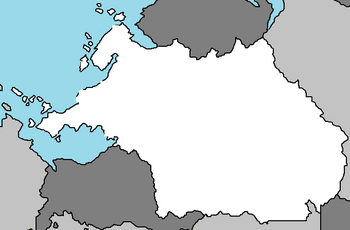Haduastan: Difference between revisions
(Created page with "{{Infobox country | conventional_long_name = Allied States of Haduastan | native_name = {{resize|80%|République démocratique du Apatolia}} | image_flag...") |
|||
| Line 107: | Line 107: | ||
==Culture== | ==Culture== | ||
[[Category: | [[Category:Haduastan]][[Category:Coalition of Crown Albatross]] | ||
Revision as of 23:09, 1 November 2021
Allied States of Haduastan République démocratique du Apatolia | |
|---|---|
|
Flag | |
| Motto: "Truth alone triumphs" | |
 | |
| Capital | Lalkot |
| Largest city | Dokata |
| Official languages | Hadua |
| Recognised national languages | |
| Religion (2021) | |
| Demonym(s) | Haduastani, Haduan |
| Government | Federal parliamentary wikipedia:constitutional republic |
| Sharya Kamath | |
| Sartaj Bali | |
• Vice President | Agamjit Datewas |
• Speaker of the Parliament | Navleen Dhesi |
• President of the Constitutional Court | Janpreet Atwal |
| Legislature | Parliament |
| Senate | |
| National Assembly | |
| Population | |
• 2021 estimate | 297,819,000 |
| GDP (PPP) | 2019 estimate |
• Total | |
• Per capita | |
| Gini (2012) | medium |
| HDI (2019) | medium |
| Currency | rupee (HRP) |
| Date format | dd/mm/yyyy |
| Driving side | right |
| Calling code | +456 |
| Internet TLD | .ha |
Haduastan, officially known as the Allied States of Haduastan, is a nation in central Ausiana, bordered Uplistan, Barangadesh, and Elastan, with a maritime border with Styrae along the Bay of Dokata and on the Gulf of Ausiana. It has a population of 297,819,000 people, making it the third most-populous nation on Iearth after Yuan and Zamastan, having outpaced Emmiria in 2015. Its capital is Lalkot, and its largest city is Dokata.
Modern humans arrived in Haduastan no later than 55,000 years ago. Their long occupation, initially in varying forms of isolation as hunter-gatherers, has made the region highly diverse, second only to the whole of Adula in human genetic diversity. Settled life emerged on the subcontinent in the western margins of the Jandus River basin 9,000 years ago, evolving gradually into the Jandus Valley Civilisation of the third millennium BCE. By 1200 BCE, an archaic form of Ausianan language had diffused into Haduastan from the northwest, unfolding and recording the dawning of Haduaism in the country. The languages of Haduastan were supplanted in the northern and western regions. By 400 BCE, stratification and exclusion by caste had emerged within the culture, and Buddhism and Jainism had arisen, proclaiming social orders unlinked to heredity.
Following the World War, a pioneering and influential nationalist movement emerged, which was noted for nonviolent resistance and became the major factor in ending --insert nation-- rule. In 1955 the state was partitioned into two independent dominions, a Hindu-majority Allied States of Haduastan and a Muslim-majority Republic of Barangadesh, amid large-scale loss of life and an unprecedented migration.
